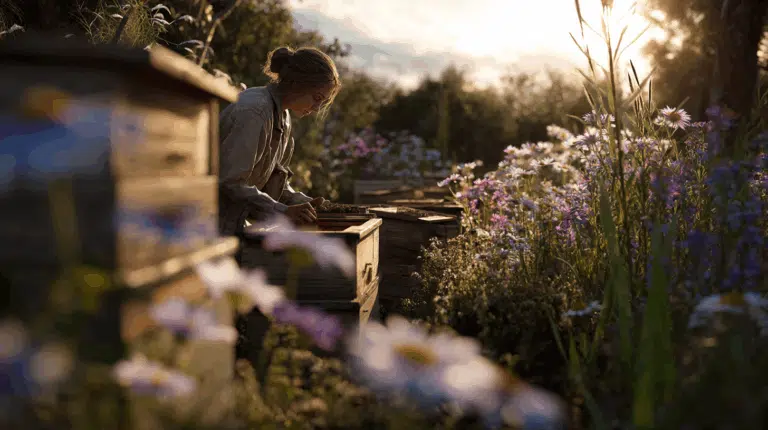Gomphrena is een kleurrijke, droogtebestendige zomerbloem met ronde bloemen in paars, rood, rose of wit. Geschikt voor borders, potten of als snijbloem, en blijft langdurig decoratief in boeketten.
Met Gomphrena zaden van EasySeeds.eu kun je je tuin, borders en potten vullen met uitbundige, kleurrijke snijbloemen die ideaal zijn voor boeketten en bloemstukken. Gomphrena uit zaad zaaien geeft tuiniers de vrijheid om een vrolijke en levendige tuin te creëren, terwijl de stevige bloemen ook perfect geschikt zijn voor verse en gedroogde boeketten. Gomphrena, ook wel bekend als Bolle bloem of Globe Amaranth, staat bekend om zijn ronde, bolvormige bloemhoofdjes en lange houdbaarheid als snijbloem.
Opvallende kleuren en unieke vorm
Gomphrena produceert bloemen in tinten zoals paars, roze, rood, wit en lavendel. De compacte, ronde bloemhoofdjes geven een speels en decoratief effect in borders en boeketten.
Langdurige bloei en onderhoudsvriendelijk
Gomphrena bloeit van midden zomer tot de vroege herfst en behoudt zijn kleur en vorm, ook wanneer de bloemen gedroogd worden. Ze zijn relatief eenvoudig te verzorgen en ideaal voor zowel beginnende als ervaren tuiniers.
Veelzijdig en bijvriendelijk
Deze snijbloemen trekken bijen, vlinders en andere bestuivers aan, waardoor ze bijdragen aan biodiversiteit en een gezonde tuinomgeving.
Snijbloemen voor boeketten – De stevige stelen en kleurrijke bolvormige bloemen maken Gomphrena ideaal voor verse boeketten en droogbloemen.
Borders & perken – Voeg structuur, hoogte en levendige kleuren toe aan je borders met deze charmante bloemen.
Potten en bakken – Compacte Gomphrena-soorten zijn uitstekend geschikt voor potten, balkonbakken en terrassen.
Combinaties met andere snijbloemen – Mix Gomphrena met Zinnia, Celosia of Tagetes voor een speels en kleurrijk effect in boeket en border.
Zaaitijd – Zaai binnenshuis van februari tot april of direct buiten na de laatste vorst voor een optimale start.
Grond & standplaats – Gebruik goed doorlatende zaaigrond en kies een zonnige locatie voor maximale groei en bloei.
Verzorging – Houd de grond vochtig tijdens kiemen en eerste groeifase; geef regelmatig voeding voor sterke en gezonde planten.
Uitharden – Laat jonge planten geleidelijk wennen aan buitenomstandigheden voordat ze definitief uitgeplant worden.
Onderhoud – Verwijder verwelkte bloemen (deadheading) om de bloei te verlengen en gezonde stelen te behouden.
Bij EasySeeds.eu vind je een uitgebreid assortiment Gomphrena zaden, geselecteerd op kiemkracht, kleurvariatie en bloei-intensiteit. Of je nu borders wilt vullen, potten wilt verfraaien of zelf boeketten wilt samenstellen – onze Gomphrena zaden helpen je tuin en boeketten elk seizoen tot leven te brengen.
🌸 Ontdek nu ons assortiment en bestel eenvoudig online – Gomphrena zaden kopen doe je bij EasySeeds.eu!

Gomphrena globosa: Dit is het meest populaire en wijdverspreide type, met ronde, bolvormige bloemen in kleuren zoals paars, roze, rood en wit. Gomphrena globosa staat bekend om zijn duurzaamheid en levendige uitstraling en is uitstekend geschikt voor snijbloementuinen en bloemstukken.
Gomphrena haageana: Een compacter en uniek type, gekenmerkt door grotere, iets langere bloemen. Deze variant heeft vaak fellere kleuren en een iets andere groeiwijze, waardoor hij ideaal is voor kleinere tuinen of potten.
Regionale overwegingen: Gomphrena is het meest geschikt voor warme, zonnige gebieden. De plant gedijt goed in hete en droge omstandigheden, waardoor hij ideaal is voor droogtegevoelige regio’s. In koelere klimaten moet hij echter vaak als eenjarige worden geteeld of binnenshuis worden opgekweekt voordat de laatste vorst voorbij is.
Klimaat: Gomphrena gedijt het beste in warme klimaten met veel zonlicht. De plant kan droge en hete omstandigheden verdragen, waardoor hij ideaal is voor droge gebieden of zonnige tuinen.
Bodem: Vereist goed doorlatende grond, maar kan ook goed groeien in arme of zandige bodems. Gomphrena is een sterke, aanpasbare plant die goed omgaat met verschillende grondsoorten.
Zonlicht: Volle zon is essentieel voor gezonde groei en levendige bloemen. Gomphrena doet het het beste op zonnige plekken waar de plant meerdere uren direct zonlicht krijgt.
Nazorg: Om de houdbaarheid van verse Gomphrena-bloemen te maximaliseren, plaats je ze direct na het snijden in water. Voor gedroogde bloemen hang je ze eenvoudig ondersteboven op een goed geventileerde plek totdat ze volledig gedroogd zijn.
Marktaantrekkingskracht: Door de felle kleuren, het eenvoudige onderhoud en de langdurige bloei is Gomphrena een populaire keuze bij zowel tuiniers als bloemisten. De plant wordt vaak gebruikt in bloembedden, borders en gemengde bloemstukken.
Teelt: Gomphrena is zeer gemakkelijk te kweken, waardoor hij ideaal is voor beginnende tuiniers of voor wie een onderhoudsarme toevoeging aan de tuin zoekt. Dankzij de droogtetolerantie en aanpassingsvermogen aan arme bodems is de plant perfect voor moeilijke klimaten of gebieden met beperkte watervoorziening.